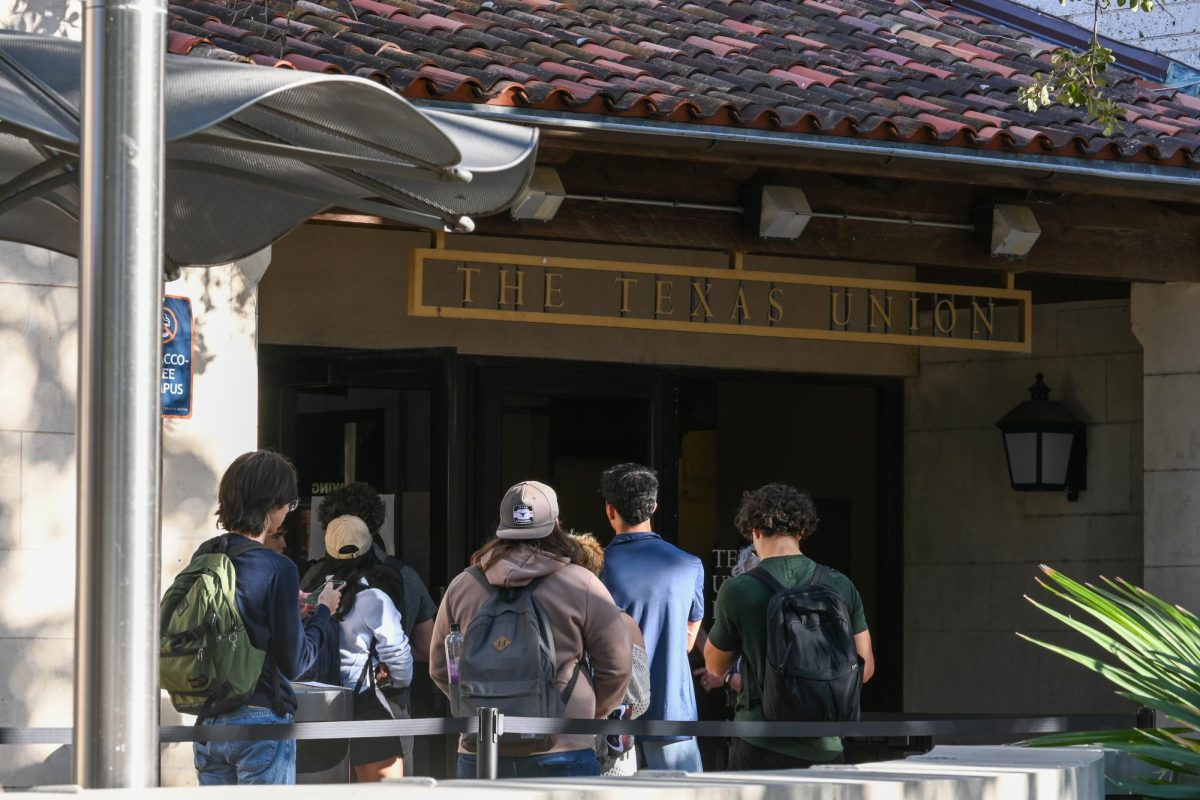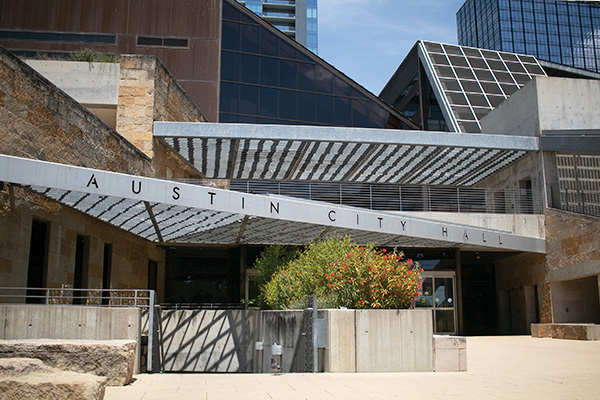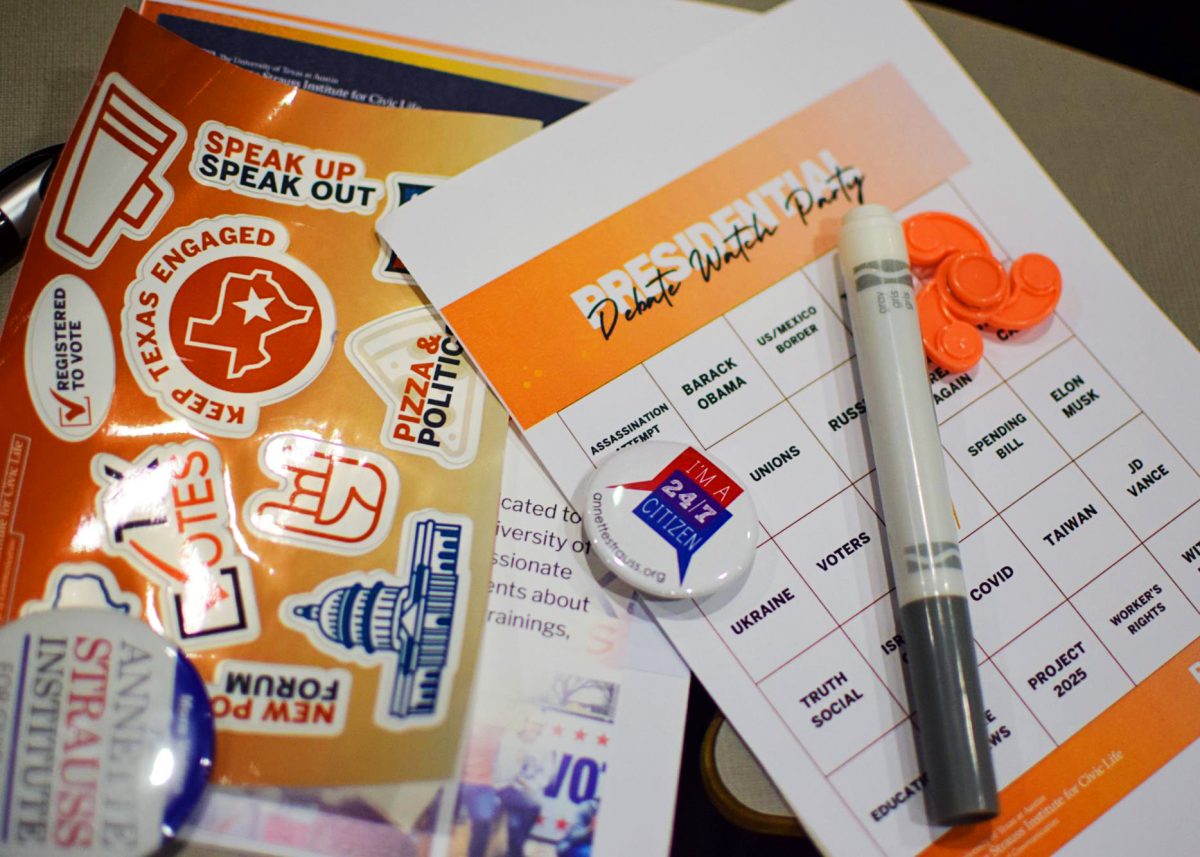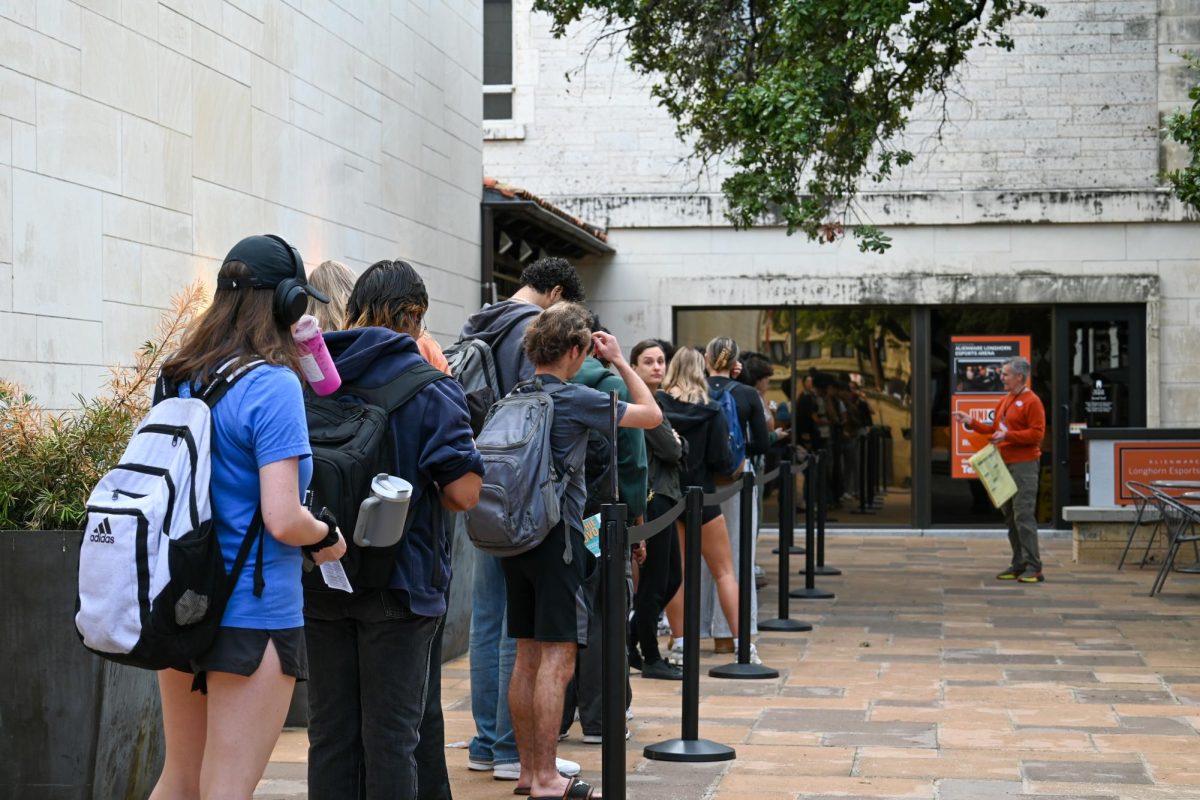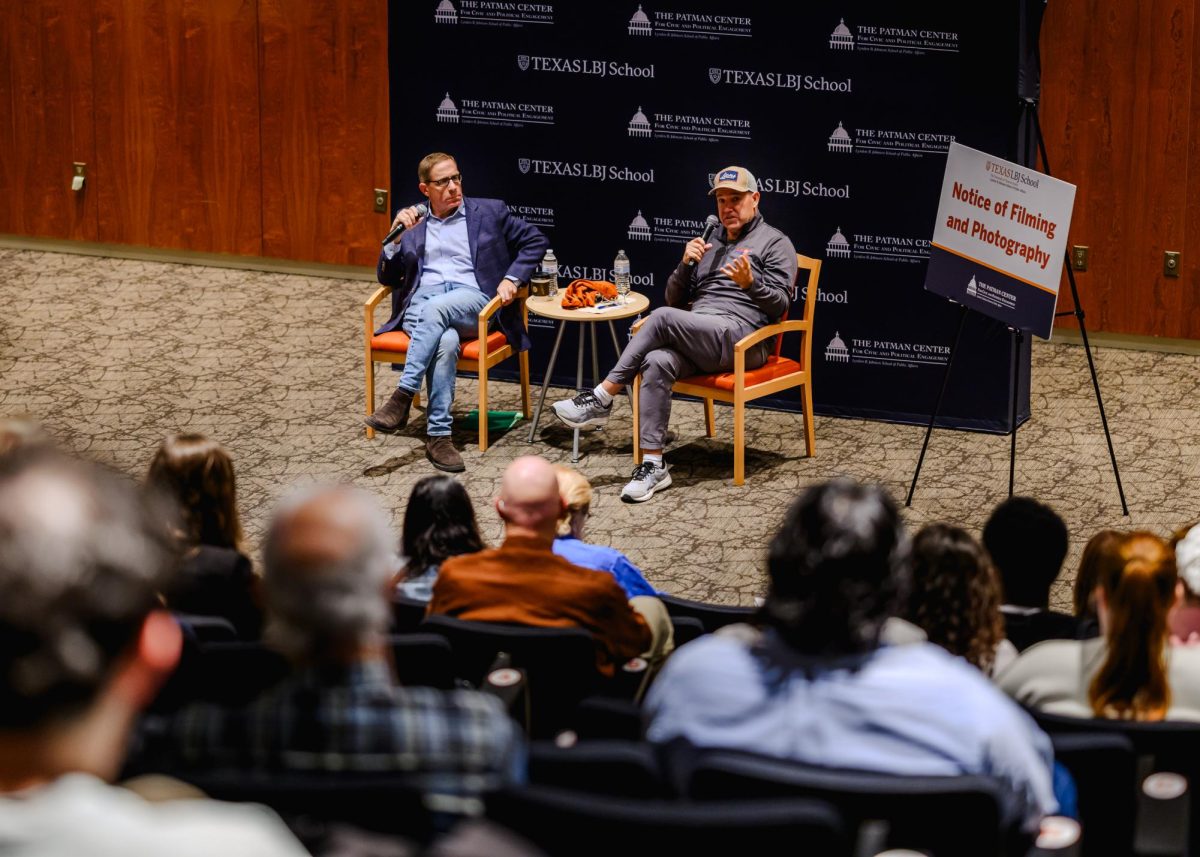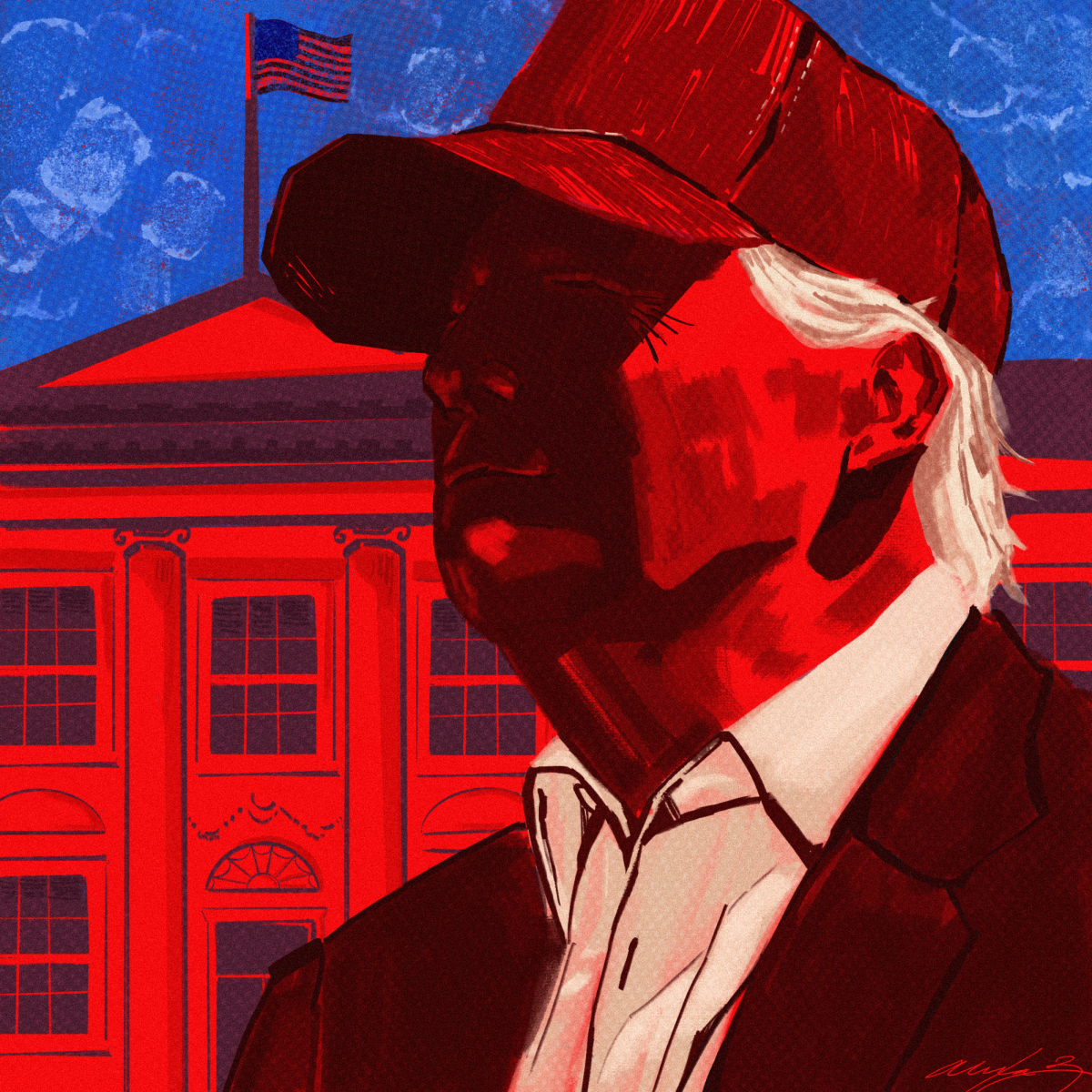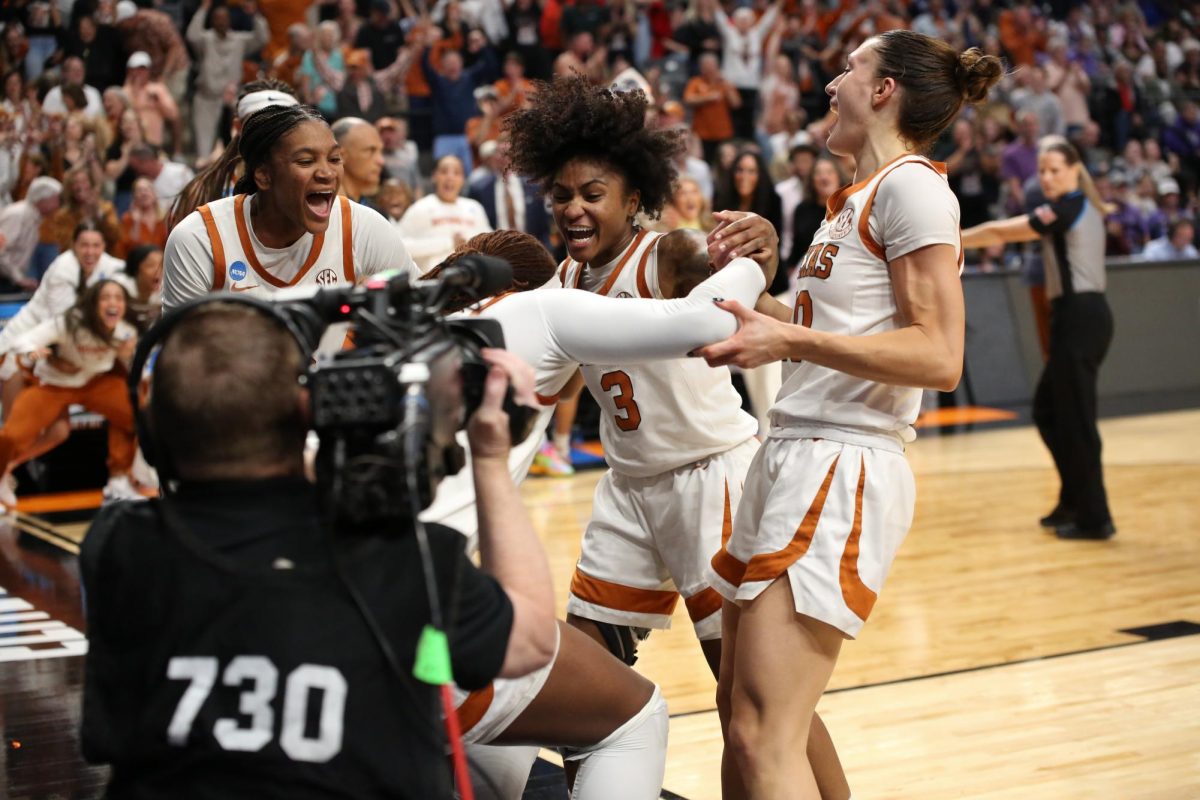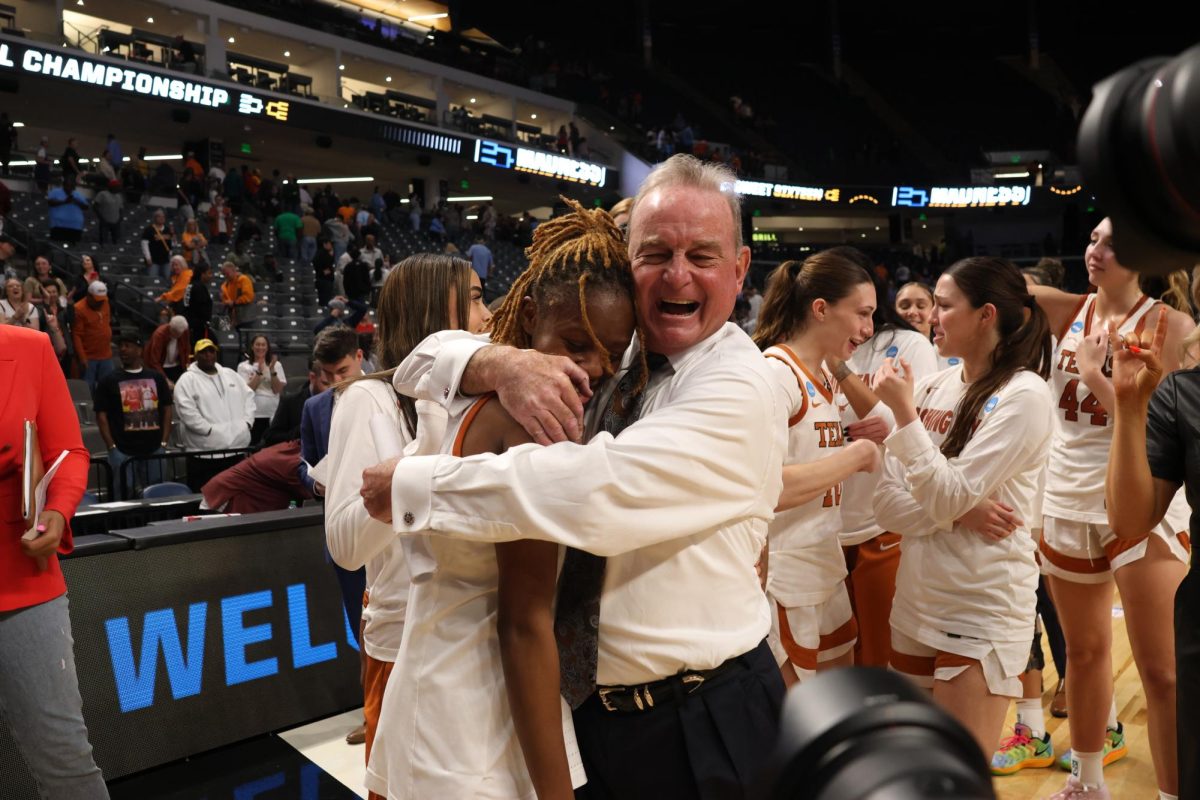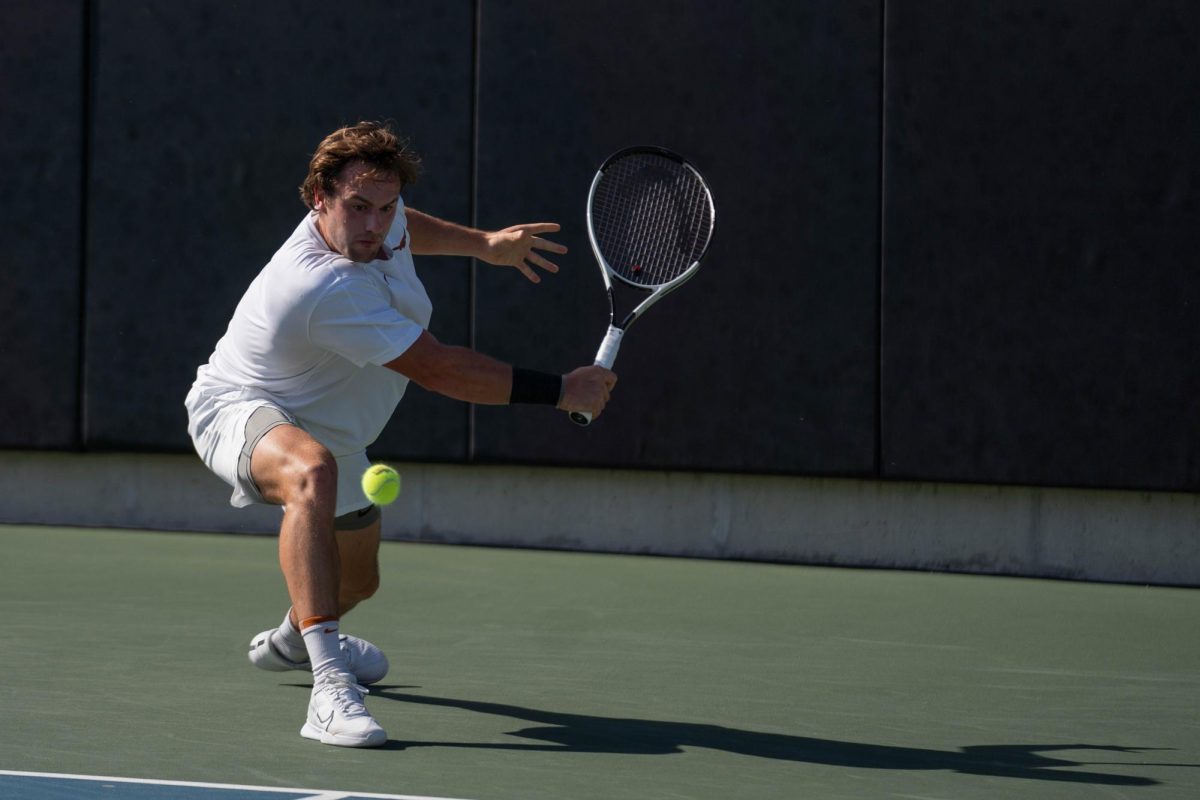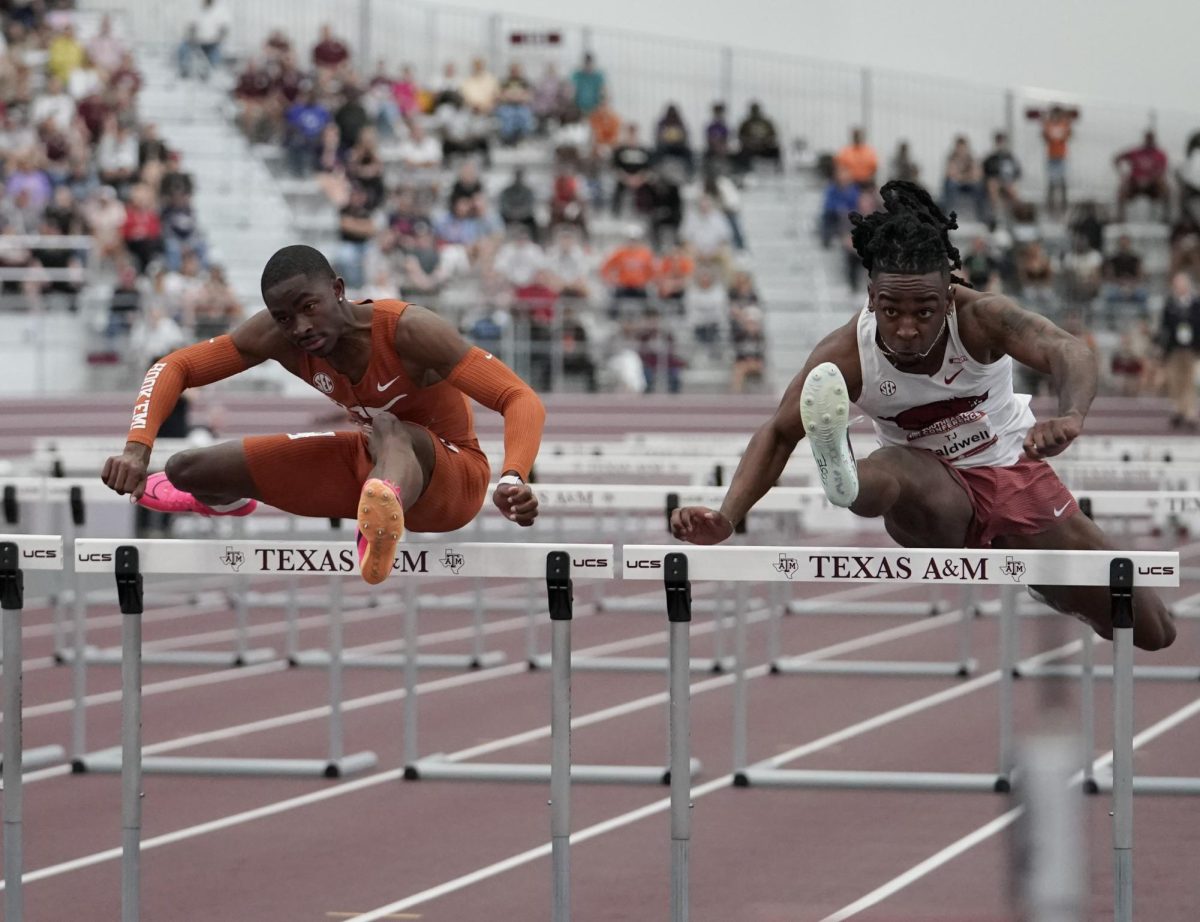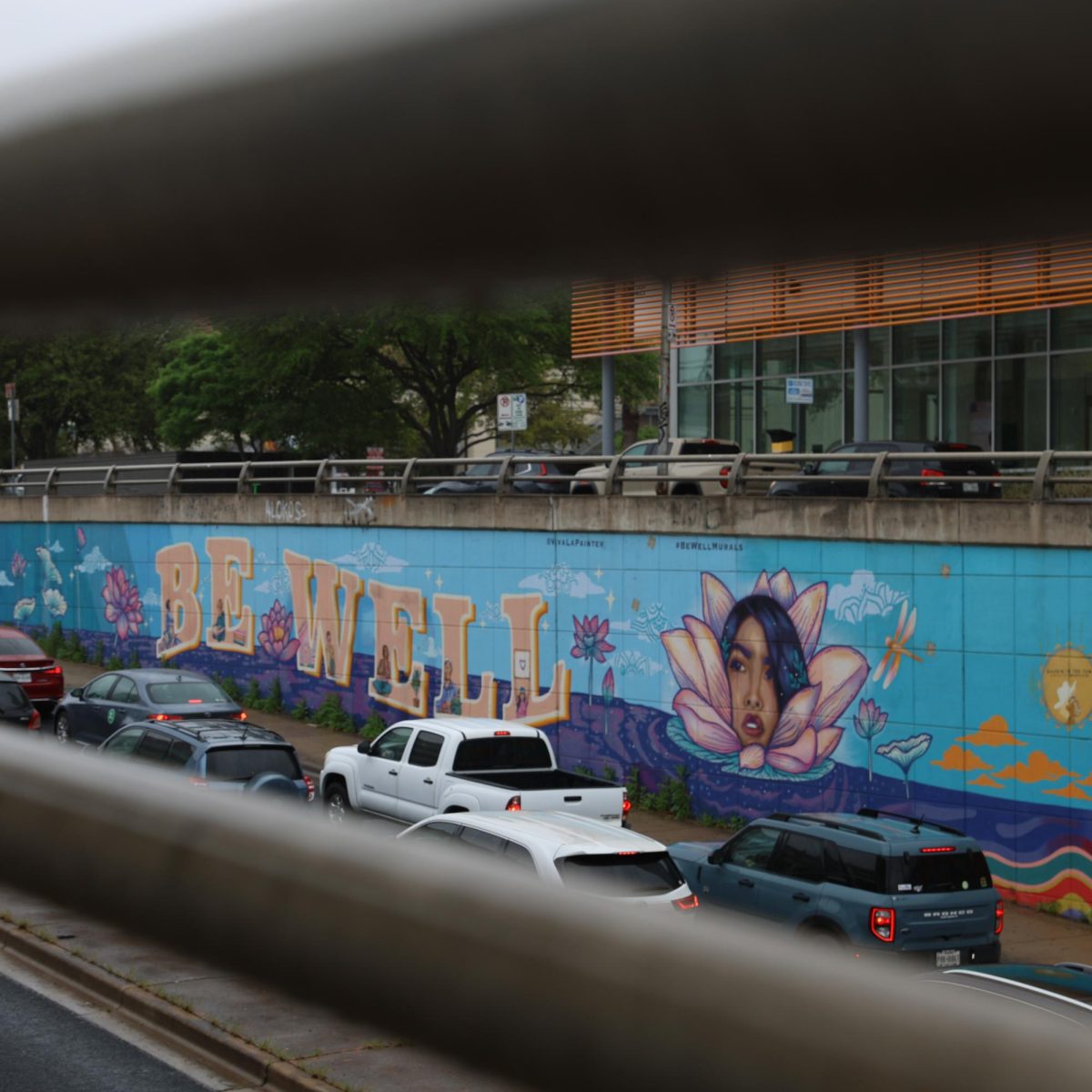For the past 30 years, the state of Texas has voted Republican. For the past five, conservative lawmakers have passed a slew of legislation targeting a central, threatening idea — liberal college campuses. In the spring, the implementation of Senate Bill 17 at Texas public universities in ceased operations of all diversity, equity and inclusion programs, offices and training. The effects reached far and wide on UT’s campus, with the closure of many offices such as the Multicultural Engagement Center and Gender and Sexuality Center and later the dissolution of the Division of Campus and Community Engagement. In April, the University fired around 60 staff members who previously worked in DEI-related positions to better align with SB 17.
Legislative actions like SB 17 follow a growing distrust of higher education and concerns about left-wing agendas within campuses.
Across the board, universities are regarded as liberal epicenters, regardless of the area around them. UT in particular is a liberal outlier in a conservative state.
To explore this idea, the Texan compiled data to analyze the past 10 years of election results at three Texas public universities — the University of Texas at Austin, Texas A&M University and Texas Tech University. The data revealed a general positive trend in Democratic votes at college campuses at rates faster than that of both its counties and the state. These changes are far from consistent across schools, but overall demonstrate a notable shift to the left in the political attitudes of the state’s youngest voters throughout the last decade.
This shift correlates with Donald Trump’s rise to prominence in American politics in 2016. To reflect this shift, the Texan divided this data by average party advantage prior to and after the 2016 general election.
Travis County, which historically votes Democratic, averaged a Democratic advantage, or share of Democratic votes minus share of Republican votes, of 23.9 points prior to the 2016 general election and 42.6 points after. The UT campus area averaged a Democratic advantage of 34.3 points prior to 2016 and 51 points after.
“When you look at UT, it probably doesn’t differ too dramatically from a county that’s overwhelmingly Democratic to begin with,” said Josh Blank, research director for the Texas Politics Project. “To the extent it does, I think you could probably just peg that to age.”
According to the Pew Research Center, about 66% of voters aged 18 to 24 associate with the Democratic Party in 2024.
Texas A&M and Texas Tech University, which are commonly perceived as more conservative campuses, present a different story.
Located in South Central Texas, Texas A&M’s Brazos County averaged a Republican advantage of 40 points prior to 2016, which was cut in half to 19.5 points in 2016 and beyond.
In a significant shift, Texas A&M averaged a Republican advantage of 27.3 points prior to 2016, but flipped to an average Democratic advantage of 4.5 points in later elections. On average, the university voted 9.2 points more Democratic than Brazos County.
Texas Tech’s Lubbock County, located in Northwest Texas, averaged a sizable Republican advantage of 48.9 points prior to 2016, which decreased to 35.6 points in 2016 and beyond.
However, campus areas averaged only a 16.5-point Republican advantage prior to 2016, with a flip to a 3.9-point Democratic advantage in later elections. On average, the university voted 17.9 points more Democratic than Lubbock County.
Texas A&M saw the largest increase in the share of Democratic votes, while Texas Tech differed most significantly from the votes of its encompassing county.
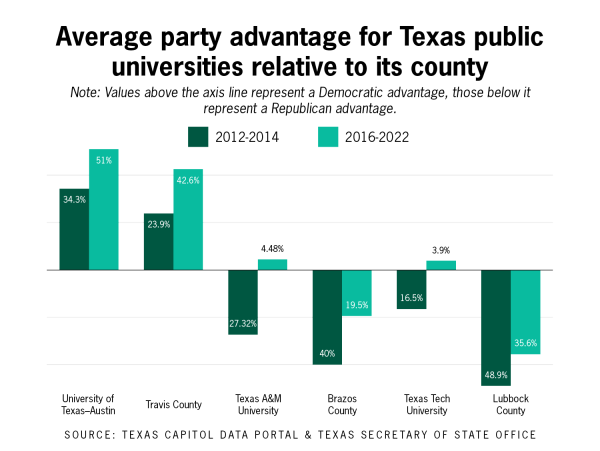
However these trends are likely not an indicator of disproportionate liberalism on college campuses. Rather, they are a reflection of the country’s changing political environment, Blank said.
“Are all campuses liberal?” Blank said. “No, but they are responsive to politics. What you’re seeing here is even formerly Republican leaning campuses in the age of Trump have moved to the Democratic column in pretty notable ways.”
More broadly, the shift could be explained by the way political ideology has become increasingly intertwined with partisanship over time, said
Talia Stroud, professor in the Moody College of Communication’s department of communication studies and founding director of the Center for Media Engagement.
“It used to be the case that you would have conservative Democrats and liberal Republicans,” Stroud said. “And while that still exists to a small extent, it’s far more likely to find people who are consistent across their ideology and partisanship.”
Psychology and humanities sophomore Kara Burks, a member of University Democrats, said she was drawn to UT partly due to its reputation as a liberal school within a conservative state. While Burks grew up in a conservative household, she said her day-to-day experiences as a woman and type 1 diabetic and her advocacy work within disabled communities have shaped her political perspective.
At a statewide level, Burks said she thinks the past several years of experiencing Texas’ political climate, including the way politicians have handled gun violence, women’s reproductive healthcare and homelessness, have motivated college students to vote for more Democrats.
“I think it’s just major past experiences that people, especially on the UT campus, have experienced,” Burks said. “Seeing how we’ve been left behind has been that wake-up call (that) something needs to change.”
Some students prefer to engage in politics in a nonpartisan way, like civil engineering junior Vincent Tomasetti. As vice president of TX Votes, a civic engagement organization on campus, Tomasetti serves as a voter deputy registrar during election seasons. He finds it fulfilling to ensure prospective voters are informed about their ballots through tabling events and nonpartisan voter guides.
“A lot of students hold political beliefs that they don’t necessarily know how to represent,” Tomasetti said. “We all have our personal beliefs, what we see in the world, and that influences how we’ll cast our ballot.”
Members of the Young Conservatives of Texas, College Republicans at Texas and Turning Point USA’s UT chapter did not respond to requests for comment. However, in an article from The Hechinger Report, conservative students from across the country at the Republican National Convention in July expressed concerns about free speech on campuses, left-leaning faculty and staff and lack of ability to have productive discourse with peers of differing political beliefs. Many said the college experience and exposure to liberal faculty and students only solidified their Republican beliefs.
Regardless of ever-changing university policies, students represent the fluctuating nature of American politics, the changing priorities of the electorate’s youngest voters and the variety of political leaning at public college campuses across the state.
“There’s not one story,” Blank said. “Really, what you’re seeing is the politics of the last decade being reflected in the attitudes of young people.”
Note: This data was gathered using the results of the voting tabulation districts (VTDs) of areas encompassing college campuses and their surrounding areas, in which most students tend to vote. It includes only the offices of president, governor and U.S. senator for the general and midterm election years from 2012 to 2022. Because these districts include the votes of anyone who casts a ballot within their borders, the results may include some non-student voters such as faculty or community members, and do not account for students who vote elsewhere.

